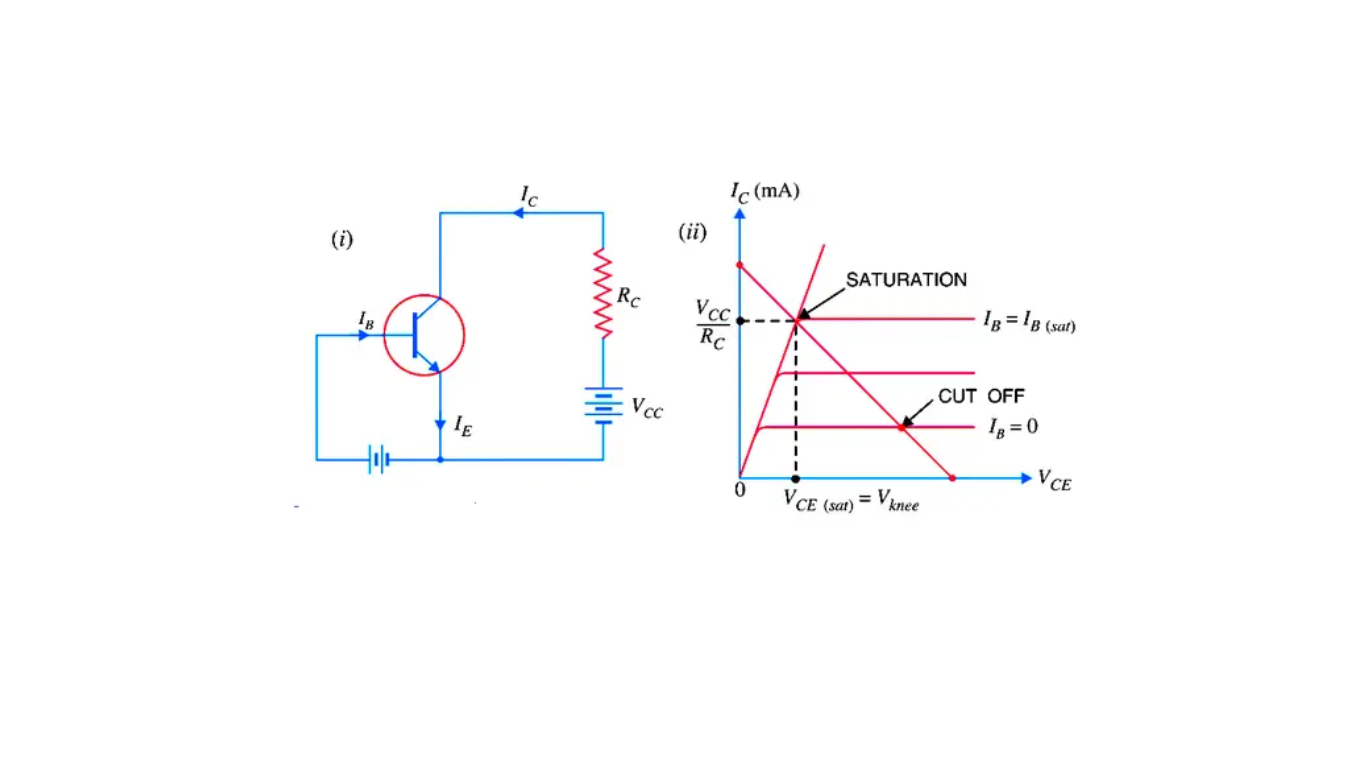In CMOS (Complementary Metal-Oxide-Semiconductor) technology, transistors play a vital role in the functioning of digital circuits. These transistors operate in different regions, including the saturation region and the cutoff region. This article aims to explore the characteristics, behavior, and importance of the saturation and cutoff regions in CMOS transistors.

CMOS Technology
CMOS technology is widely used in modern integrated circuits due to its low power consumption, high noise immunity, and excellent scalability. It utilizes complementary pairs of MOSFETs (Metal-Oxide-Semiconductor Field-Effect Transistors), namely PMOS (P-channel MOSFET) and NMOS (N-channel MOSFET), to implement digital logic functions.
Active Region in CMOS
Before diving into the saturation and cutoff regions, it’s important to understand the active region in CMOS transistors. The active region is the operating region where the transistor behaves as an amplifier and can actively control the current flow between its terminals.
Saturation Region in CMOS
The saturation region is one of the operating regions of a CMOS transistor. In this region, both the PMOS and NMOS transistors are in an “ON” state, allowing a significant current to flow between the source and drain terminals. The transistor is fully turned on, and it operates as a low-resistance channel between the source and the drain.
Cutoff Region in CMOS
The cutoff region is another operating region of a CMOS transistor. In this region, both the PMOS and NMOS transistors are in an “OFF” state, resulting in no current flow between the source and drain terminals. The transistor acts as an open switch, effectively interrupting the flow of current.
Characteristics and Behavior in Saturation Region
When a CMOS transistor operates in the saturation region, it exhibits specific characteristics and behavior:
Low Voltage Drop: The transistor experiences a low voltage drop between the source and drain terminals, resulting in minimal power dissipation.
High Current Capability: The transistor allows a relatively high current to flow between the source and drain terminals, facilitating efficient signal amplification.
Saturated Channel: The channel between the source and drain terminals is fully saturated, ensuring a low-resistance path for current flow.
Characteristics and Behavior in Cutoff Region
When a CMOS transistor operates in the cutoff region, it demonstrates distinct characteristics and behavior:
High Voltage Drop: The transistor experiences a high voltage drop between the source and drain terminals, leading to minimal current flow and power dissipation.
Insulated Channel: The channel between the source and drain terminals is effectively insulated, preventing current flow and acting as an open switch.
No Signal Amplification: The transistor does not amplify signals in the cutoff region and effectively interrupts the signal path.
Transistor Sizing Considerations
Transistor sizing is an essential consideration in CMOS circuit design. The dimensions of the transistors, specifically their width and length, affect their behavior in different regions. By carefully selecting the transistor sizes, circuit designers can optimize performance, power consumption, and speed.
Applications and Importance
Understanding the saturation and cutoff regions in CMOS transistors is crucial for efficient circuit design. By leveraging the active region, circuit designers can create amplifiers, switches, and complex digital logic circuits. The ability to control the transistors’ operation in these regions allows for precise signal processing, power management, and efficient utilization of resources.
The saturation and cutoff regions in CMOS transistors are essential operating regions that determine their behavior and characteristics. The saturation region enables active signal amplification, while the cutoff region interrupts the current flow. By leveraging these regions effectively, circuit designers can create advanced digital systems with optimal performance and power consumption.
FAQs
Q1. Can a CMOS transistor operate in both the saturation and cutoff regions simultaneously?
No, a CMOS transistor operates in either the saturation or the cutoff region at a given time, depending on the applied voltage and the circuit configuration.
Q2. Are the saturation and cutoff regions limited to CMOS transistors only?
The saturation and cutoff regions are specific to MOSFET-based transistors, including CMOS transistors. Other types of transistors may have different operating regions.
Q3. What happens if a transistor is biased between the saturation and cutoff regions?
Biasing a transistor between the saturation and cutoff regions can result in non-linear behavior and inefficient operation. It is essential to design circuits that ensure transistors operate in their desired regions.
Q4. How does the saturation region differ from the active region in CMOS transistors?
The saturation region is a specific operating region within the broader active region of a CMOS transistor. The active region includes both the saturation and linear regions, where the transistor can actively amplify signals.
Q5. Can transistors in the cutoff region consume power?
In the cutoff region, CMOS transistors have minimal current flow and power dissipation, resulting in negligible power consumption.